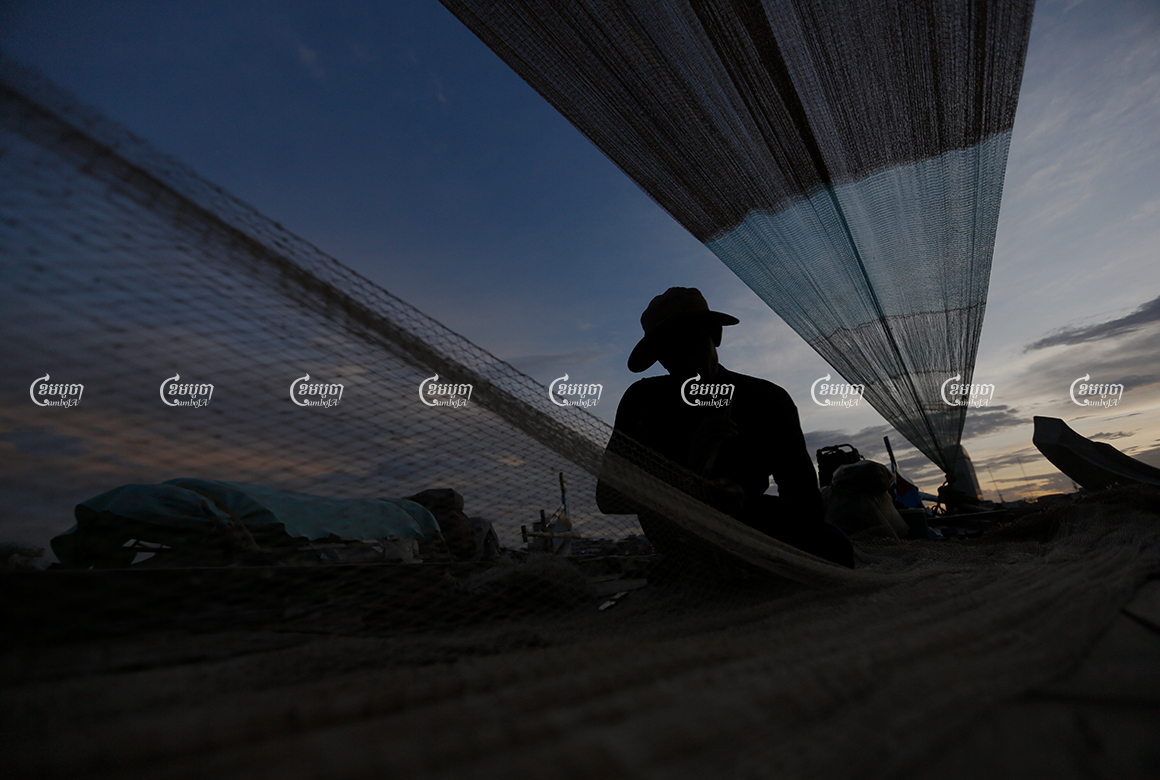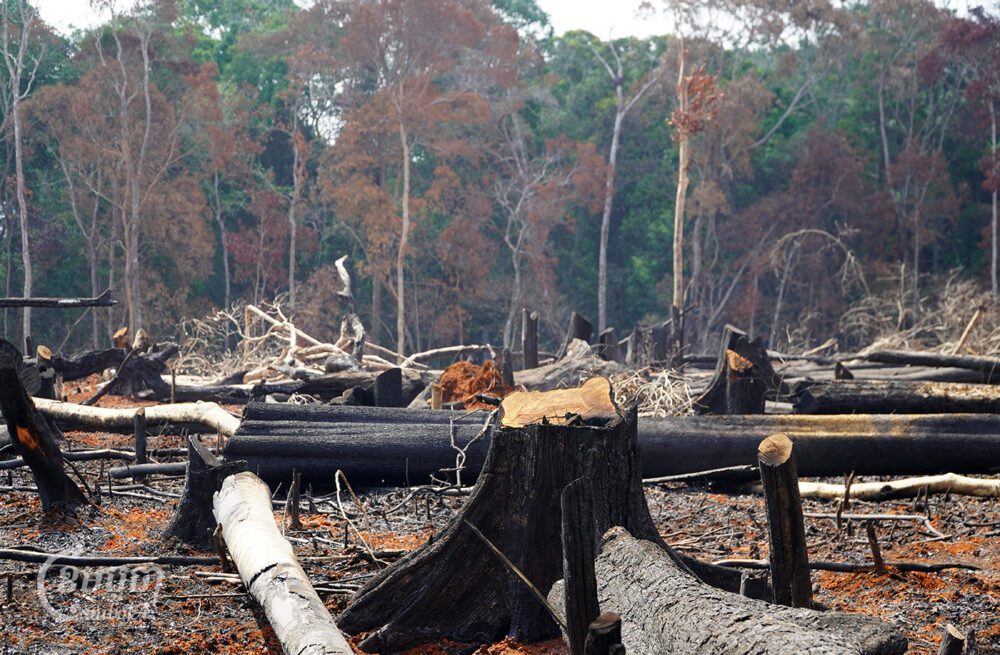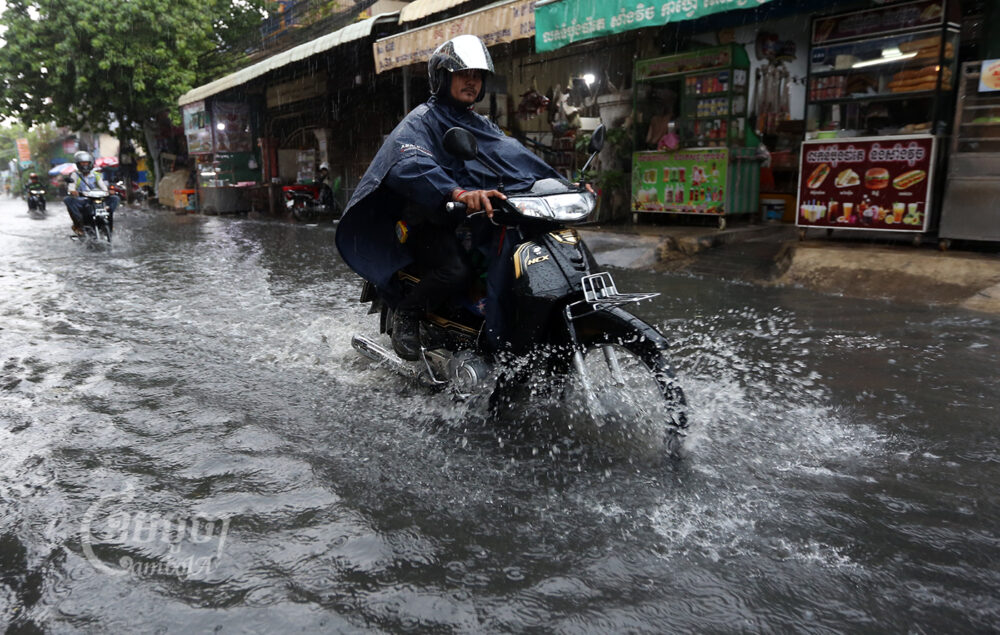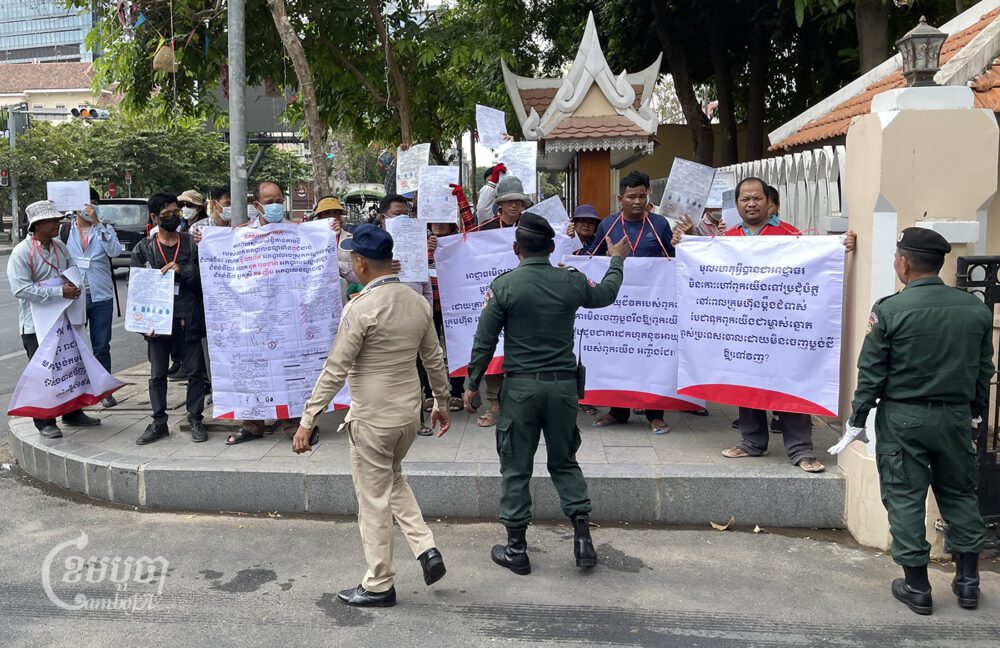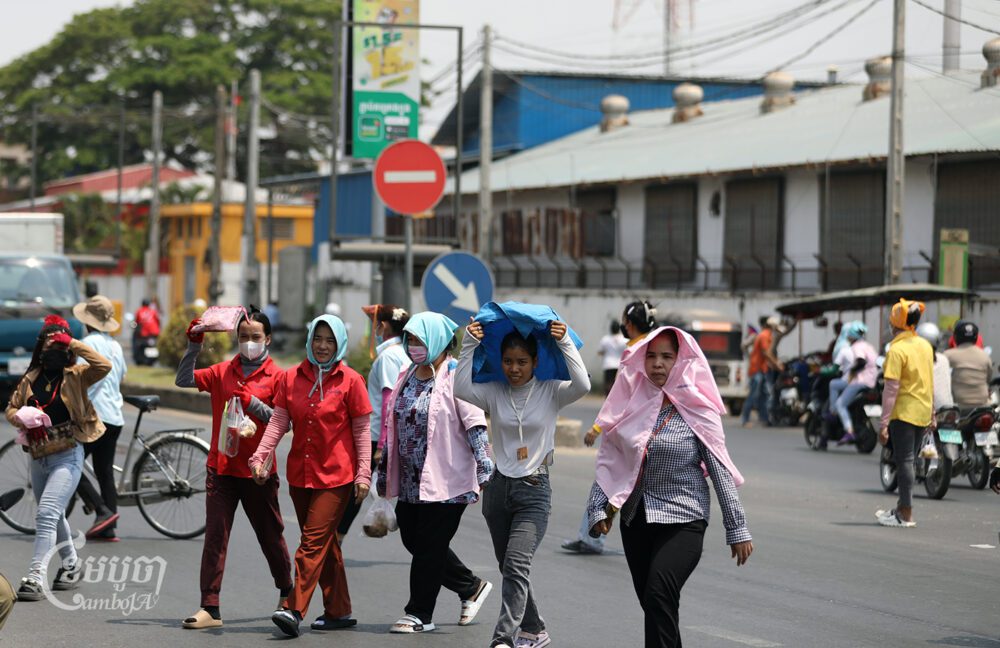As the rainy season begins, people living on and around the Tonle Sap Lake say they fear another year of poor catch and dangerously low water levels in the region’s largest freshwater basin.
Kohmono Amir Ya, a fisherman in Kampong Chhnang province’s Boribor district who grew up on the lake, said that Illegal fishing has been destroying fish resources in the lake.
“We depend on fishing, we have no other skills, otherwise we will go to work as construction workers when we cannot catch fish anymore,” he said. “I can no longer find fish to eat, and I have to buy fish from the market.”
Water levels in the Tonle Sap Lake have been dropping in recent years due to an increasing number of hydropower dams built on the Mekong and its tributaries. The lake has also suffered from overfishing, leading many fishers to an overreliance on illegal tools.
“If we use ordinary fishing tools, we cannot catch fish, but if we use banned fishing equipment, we have to pay [the authorities] money. People have no money to pay them,” he said.
In the past, Amir Ya said he typically earned more than $15 a day from fishing in January and February. Unable to catch fish anymore, he now works in construction, where he makes about $8 a day.
The Tonle Sap Lake expands and contracts with the seasons, with water flowing in from the Mekong — via the Tonle Sap River — at the start of rainy season and out at its end. With water levels dropping in the Mekong due to dams, the Tonle Sap River reversal has been occurring much later in recent years. In 2020, the river didn’t fully reverse course until October, about four months late, and the volume of the lake during the rainy season was a quarter of its normal size.
In its weekly situation report, the Mekong River Commission (MRC) shows the main outflow from Tonle Sap Lake started since November 15, 2020. The outflow condition in late 2020 was lower than its average flow but higher than in 2019, when water levels hit a historic low. Fishers are hoping the inflow comes in a timely manner this year.
Hut Han, a fishers’ representative in Prek Chhdor community, Ek Phnom district, Battambang province said that the low water level in the past two years meant that no fish had been moving into adjacent canals. Once abundant, the lack of fish now seen in the small waterways has been a blow to residents who rely on sustenance fishing.
“For the community, we are waiting to see if the water flows in, so that people can catch fish, but if the water does not come, we have nothing,” he said.
Fish is a critical part of the Cambodian diet, as well as a key livelihood. According to the Fisheries Administration, more than 75 percent of animal protein comes from fish, while 1.5 million people are employed full time in fishing, and 6 million rely on it part time or indirectly.
“People who depend only on fishing have lost their daily income, while those who have fields are also lacking water for irrigating the crops, thus affecting the livelihoods of people in the community,” he said.
Han said there are more than 300 families in Prek Chhdor village who mostly depend on fishing and agriculture. He said in addition to the low water level, illegal fishing has been rampant during the pandemic.
“Fish in the Tonle Sap Lake is less due to low water and the illegal fishing that continues to happen every day,” he said. “While everyone is busy with COVID-19, illegal fishers are increasing their illegal fishing; we complained to the authorities, but no action is taken.”

Eng Cheasan, Chief of the Fisheries Administration hung up the phone when asked about illegal fishing. Veng Sakhon, the Minister of Agriculture, Forestry and Fisheries could not be reached for comment.
Chhoung Sophea, Battambang province’s Fisheries Administration chief, said that while the water level this year is a bit higher than last year, it is much lower than it was in the past.
“We observe that since the construction of dams on the Mekong River, the water level has been declining from year to year,” he said. The drop in water levels has corresponded to a drop in catch, he said. In 2020, Battambang province collected more than 20,000 tons of fish, down 15 percent from the year prior.
Sophea said most of the illegal fishing comes from those who operate at night in the middle of the lake, making it difficult for authorities to crack down.
Om Savath, the executive director at Fisheries Action Coalition Team, said the decline in natural fisheries is a combination of several factors, including climate change, illegal fishing, and hydropower dams along the Mekong River.
“The government has raised the issue of climate change. We do not object to [addressing] this global issue, but what we are worried about is the development of hydropower projects along the Mekong River, which causes irregular flow and affects the flow of water into the lake,” he said.
He said in 2019 and 2020, the water level in Tonle Sap was 6 meters to 7 meters, which is lower than the average of between 8 meters and 11 meters in the previous few years.
“If more hydropower projects are planned as they are now, the Tonle Sap Lake will be lower in the future and it will severely affect fishery resources as the population grows. We want sustainable development by allowing normal water flow to return so that the Tonle Sap Lake can continue to thrive,” he said.
He said as fish become harder to catch, his team is encouraging fishers to process fishing products to add value, rather than focusing only on selling fresh fish.
FACT works with fishing communities in 30 communes around the Tonle Sap Lake, and has recorded a significant dip in their catch. Savath said currently people catch an average of 9 kilograms to 12 kilograms of fish a day, a drop of more than half compared with 10 years ago.
Outh Long, president of Fishing Network Community in Pursat province said that the drop in fish leads to an increase in illegal fishing, with desperate fishers going into the conservation area because there is nowhere else to find fish.
“In the dry season, water is very low causing wildfires and affecting fish habitats. Families relied on fishing and when they could no longer catch fish, their children migrated to work in factories and some migrated abroad. But because of COVID, some families now have nothing to do.”


